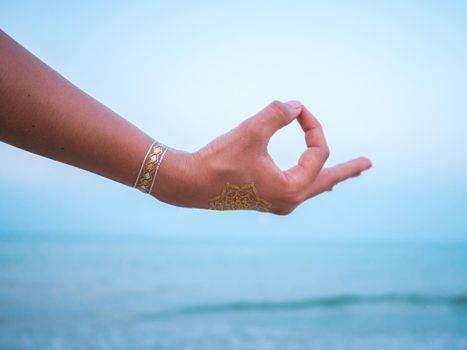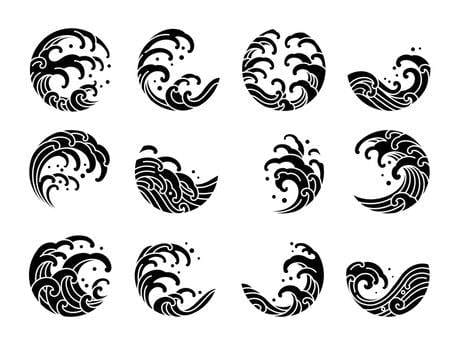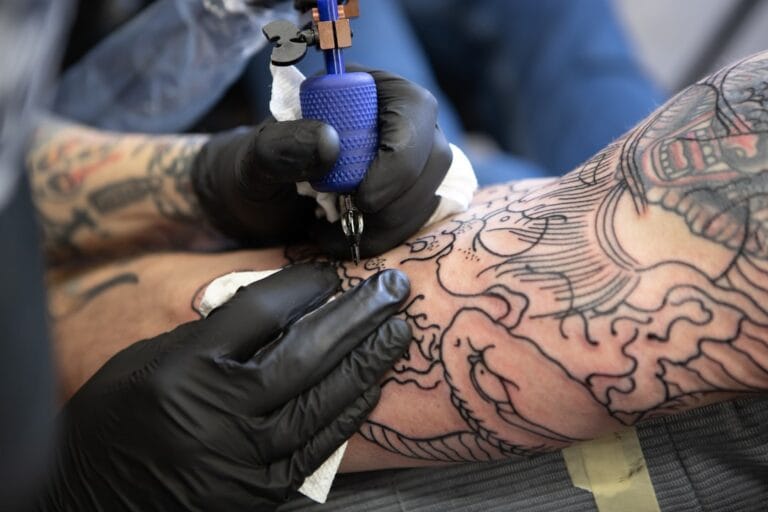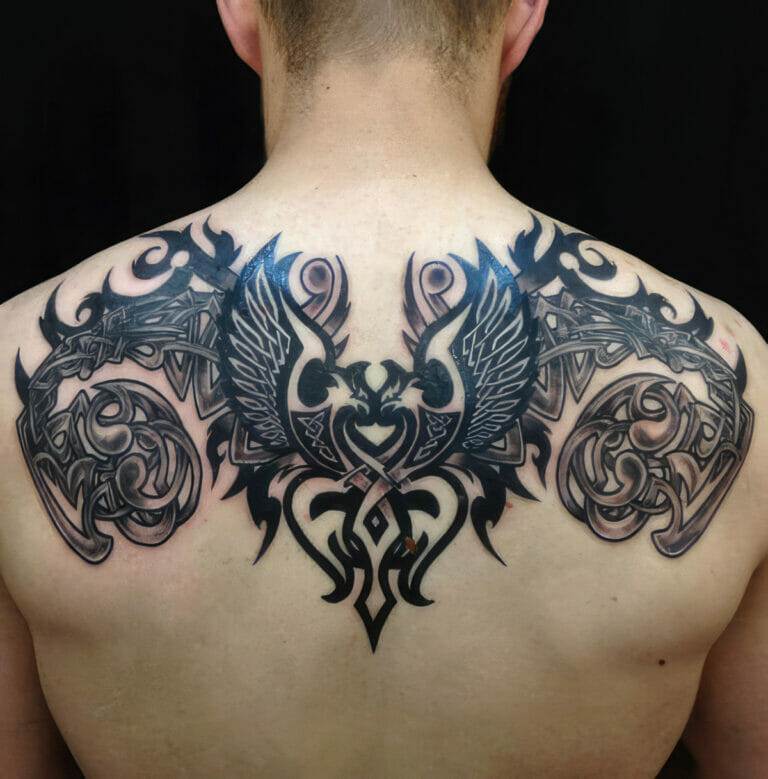
Surf culture tattoos have a rich and vibrant history that intertwines with the evolution of surfing itself. Originating in Polynesian culture, tattoos were traditionally used to signify status, achievements, and tribal affiliation. As surfing began to gain popularity in the early 20th century, particularly in California and Hawaii, these ancient tattoo practices found a new canvas in the bodies of surfers.
The connection between the ocean and tattoo art became increasingly evident as surfers sought to express their love for the sea and the lifestyle that accompanied it. In the 1960s and 1970s, surf culture exploded into mainstream consciousness, fueled by surf films, music, and a burgeoning youth culture. This era saw a significant rise in tattoo popularity among surfers, who began to adopt designs that reflected their passion for the ocean.
The imagery often included waves, surfboards, and marine life, symbolizing not just a sport but a way of life. As surfing became more than just a pastime—transforming into a global phenomenon—so too did the tattoos associated with it, evolving into a form of personal expression that resonated with surfers around the world.

Key Takeaways
- Surf culture tattoos have a rich history dating back to the early 20th century, when sailors and surfers began getting inked with nautical and ocean-inspired designs.
- Iconic designs for ocean lovers include images of waves, surfboards, palm trees, and sea creatures like sharks and turtles.
- Traditional surf culture tattoos often feature bold lines and simple color palettes, while modern designs may incorporate more intricate details and vibrant colors.
- Popular surf culture tattoos carry meanings of freedom, adventure, and a deep connection to the ocean and nature.
- When getting a surf culture tattoo, consider the placement, size, and design carefully, and choose a reputable tattoo artist with experience in this style.
Iconic Designs for Ocean Lovers
When it comes to surf culture tattoos, certain designs have become iconic among ocean lovers. One of the most recognizable symbols is the wave itself, often depicted in various styles ranging from minimalist lines to intricate, swirling patterns. Waves represent not only the physical act of surfing but also the ebb and flow of life, making them a popular choice for those who feel a deep connection to the ocean.
Many surfers opt for designs that capture the essence of their favorite surf spots, immortalizing the waves that have shaped their experiences. Another popular design is the surfboard tattoo, which can be customized to reflect personal style or favorite brands. Surfboards symbolize adventure and freedom, embodying the spirit of exploration that defines surf culture.
Additionally, marine life tattoos—such as turtles, dolphins, and sharks—are prevalent among surfers. These creatures are often seen as guardians of the ocean and serve as reminders of the beauty and power of nature. Each design carries its own significance, allowing surfers to tell their unique stories through body art.
The distinction between traditional and modern surf culture tattoos is marked by both style and symbolism. Traditional tattoos often draw inspiration from Polynesian art forms, featuring bold lines and geometric patterns that reflect cultural heritage. These designs are typically rich in meaning, often representing personal milestones or connections to ancestral roots.
For many surfers who embrace traditional tattoo styles, there is a desire to honor the history of tattooing while celebrating their love for the ocean. In contrast, modern surf culture tattoos tend to embrace a more eclectic approach. Artists today experiment with various styles, including watercolor techniques, realism, and abstract designs.
This evolution allows for greater creativity and personalization in tattoo art. Modern tattoos may incorporate elements from pop culture or contemporary art movements, reflecting the diverse influences that shape today’s surf culture. While traditional tattoos often carry deep cultural significance, modern designs prioritize individual expression and artistic innovation.
The Meaning Behind Popular Surf Culture Tattoos


The meanings behind popular surf culture tattoos are as varied as the designs themselves. For many surfers, these tattoos serve as a tribute to their passion for the ocean and the lifestyle it represents. A wave tattoo might symbolize not only a love for surfing but also resilience in facing life’s challenges—much like riding a wave requires balance and perseverance.
Similarly, a tattoo of a surfboard can represent freedom and adventure, encapsulating the thrill of catching waves and exploring new horizons. Marine life tattoos often carry deeper meanings as well. For instance, a turtle tattoo may symbolize longevity and wisdom, reflecting the surfer’s respect for nature and its creatures.
Sharks can represent strength and courage, embodying the spirit of those who navigate both the ocean’s depths and life’s uncertainties. Ultimately, these tattoos serve as personal reminders of experiences, values, and connections to the ocean that shape a surfer’s identity.
Tips for Getting a Surf Culture Tattoo
When considering a surf culture tattoo, there are several important tips to keep in mind to ensure a positive experience. First and foremost, it’s essential to choose a design that resonates personally with you. Take time to reflect on what aspects of surf culture speak to you—whether it’s a specific wave, your favorite surf spot, or an element of marine life.
Research various designs and styles to find inspiration that aligns with your vision. Selecting the right artist is equally crucial. Look for tattoo artists who specialize in surf culture or have experience with ocean-themed designs.
Review their portfolios to ensure their style matches your desired aesthetic. Communication is key; discuss your ideas openly with your artist to ensure they understand your vision and can bring it to life effectively. Additionally, consider placement carefully—think about how visible you want your tattoo to be and how it may be affected by sun exposure or other environmental factors.
Famous Surfers and Their Tattoos
Many famous surfers have embraced tattoos as part of their identity, showcasing their love for the ocean through body art. For instance, Kelly Slater, an iconic figure in surfing history, has several tattoos that reflect his connection to the sea. His ink often includes waves and marine life motifs that symbolize his lifelong dedication to surfing.
Slater’s tattoos serve not only as personal expressions but also as inspirations for fans who admire his achievements both in and out of the water. Another notable surfer is Laird Hamilton, known for his big wave riding prowess. Hamilton’s tattoos often feature elements that celebrate his adventurous spirit and connection to nature.
His body art reflects his philosophy of living life to the fullest while respecting the ocean’s power. These famous surfers demonstrate how tattoos can serve as powerful symbols of identity within surf culture, inspiring others to embrace their own stories through ink.
The Evolution of Surf Culture Tattoos

The evolution of surf culture tattoos mirrors broader trends in both tattoo artistry and surfing itself. As surfing gained popularity in the 20th century, so too did the visibility of tattoos among surfers. Initially viewed as rebellious or countercultural, tattoos have since become mainstream symbols of self-expression across various demographics.
This shift has allowed for greater acceptance of diverse tattoo styles within surf culture. In recent years, there has been a resurgence of interest in traditional tattooing techniques among surfers seeking authenticity in their body art. Many are drawn to Polynesian-inspired designs that honor the roots of surfing while celebrating its cultural significance.
Simultaneously, modern tattoo artists continue to push boundaries with innovative techniques and styles that reflect contemporary influences. This dynamic interplay between tradition and modernity ensures that surf culture tattoos remain relevant and continually evolving.
The Future of Surf Culture Tattoos
Looking ahead, the future of surf culture tattoos appears bright and full of potential for innovation and creativity. As more people embrace surfing as a lifestyle choice rather than just a sport, there will likely be an increase in demand for unique body art that reflects individual experiences on the water. This trend may lead to even more personalized designs that incorporate elements from various cultures and artistic movements.
Moreover, advancements in tattoo technology may influence how artists create surf culture tattoos. Techniques such as 3D printing could allow for more intricate designs that capture the fluidity of waves or the movement of marine life in ways previously unimaginable. As environmental awareness grows within surf culture, we may also see an increase in eco-conscious tattoo practices that prioritize sustainability in both ink choices and artist materials.
In conclusion, surf culture tattoos are more than just body art; they represent a deep connection to the ocean and a lifestyle defined by adventure and freedom. As this vibrant subculture continues to evolve, so too will its expressions through ink—ensuring that each tattoo tells a unique story while celebrating the timeless bond between surfers and the sea.
FAQs
What are some iconic surf culture tattoo designs?
Some iconic surf culture tattoo designs include wave tattoos, surfboard tattoos, palm tree tattoos, hibiscus flower tattoos, and traditional Polynesian tribal tattoos.
What is the significance of surf culture tattoos?
Surf culture tattoos often symbolize a deep connection to the ocean, love for surfing, and a laid-back lifestyle. They can also represent freedom, adventure, and a connection to nature.
Are there specific tattoo styles associated with surf culture?
Yes, there are specific tattoo styles associated with surf culture, such as traditional American tattoos, blackwork, dotwork, and watercolor tattoos. Many surf culture tattoos also draw inspiration from traditional Polynesian tattooing.
Can anyone get a surf culture tattoo, or is it reserved for surfers?
Anyone can get a surf culture tattoo, regardless of whether they are a surfer or not. These tattoos are often chosen by individuals who have a love for the ocean, surfing, and the beach lifestyle.
Are there any cultural considerations to keep in mind when getting a surf culture tattoo?
It’s important to be respectful and mindful of the cultural significance of certain designs, especially those inspired by traditional Polynesian tattooing. It’s best to do thorough research and consult with a knowledgeable tattoo artist to ensure cultural sensitivity.






